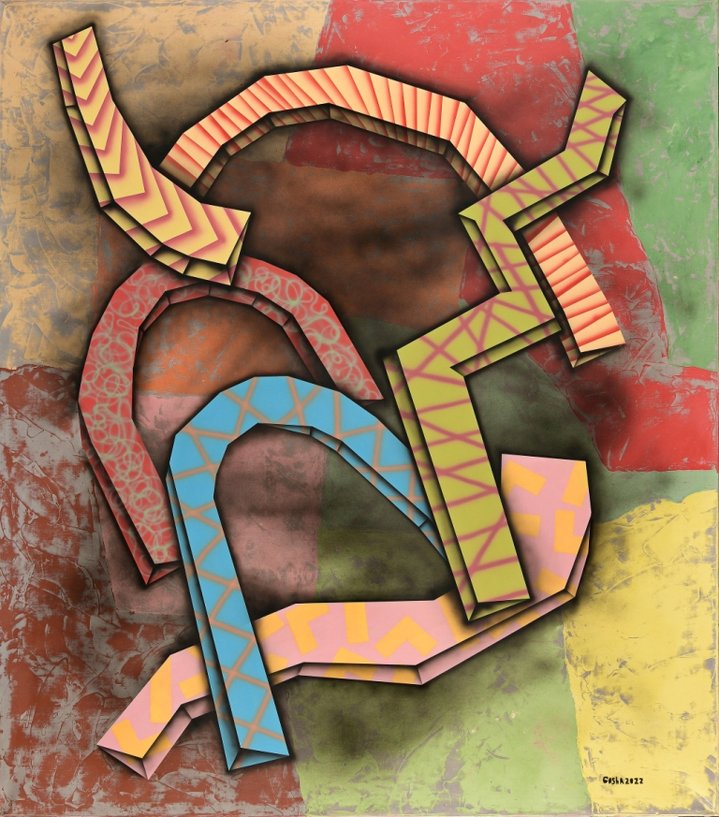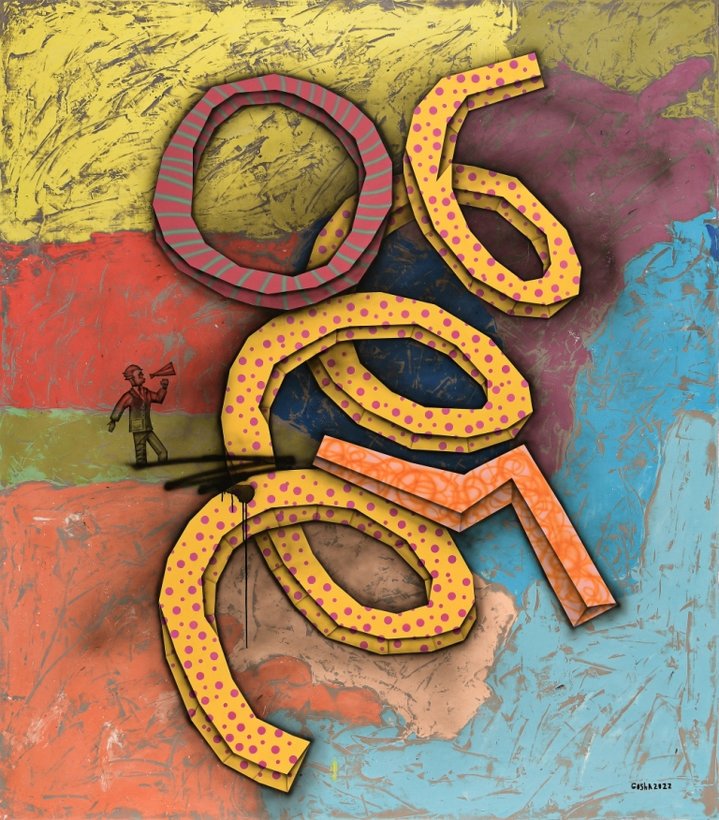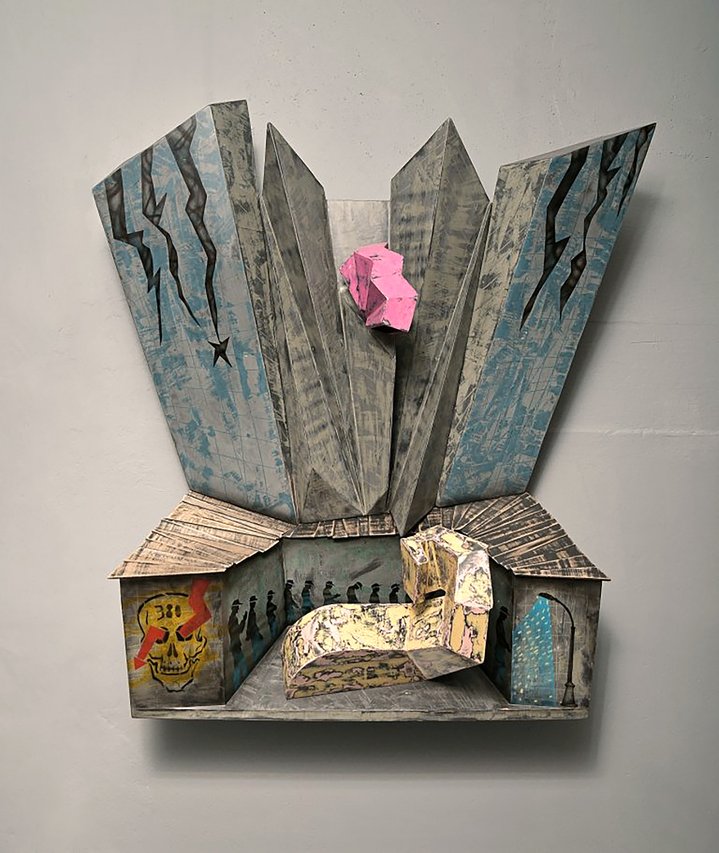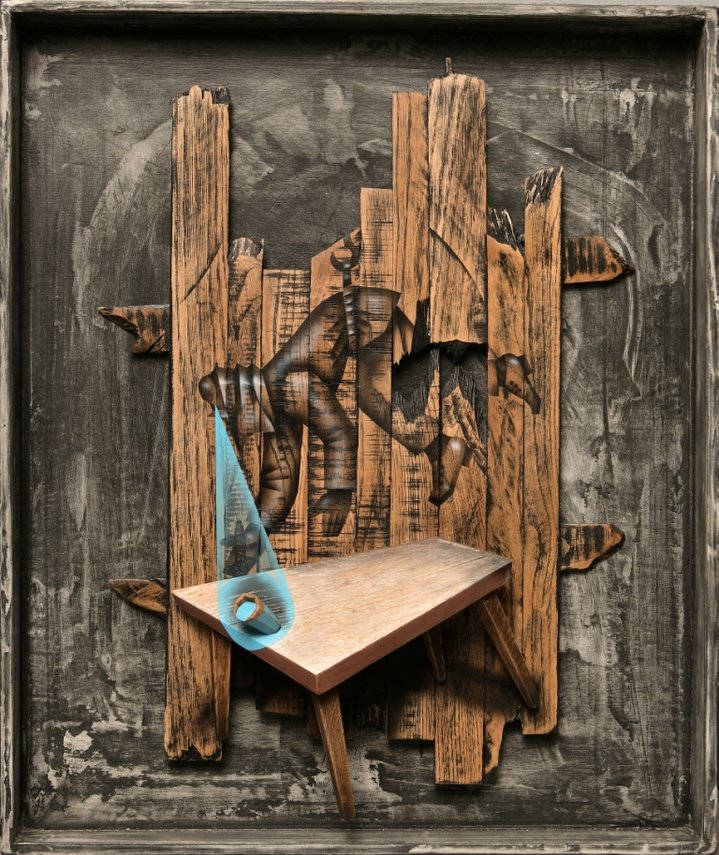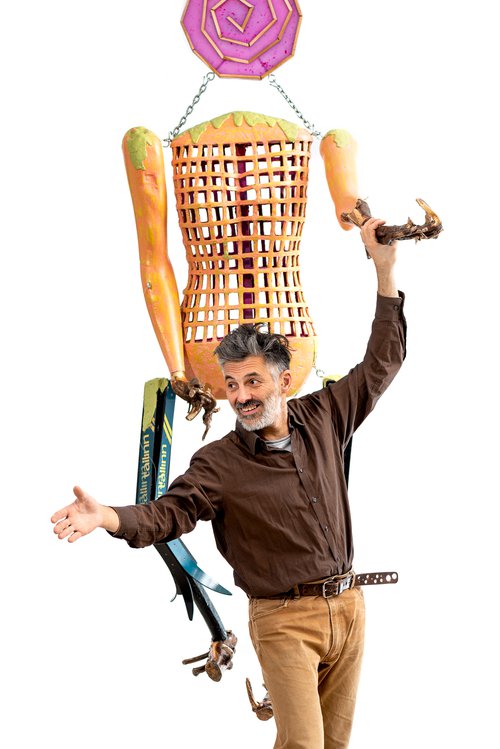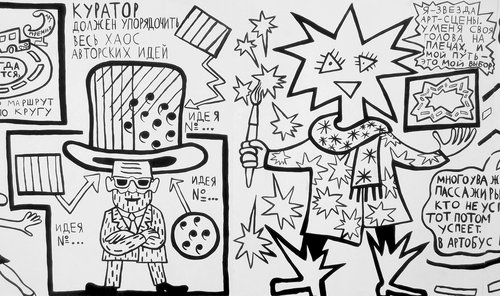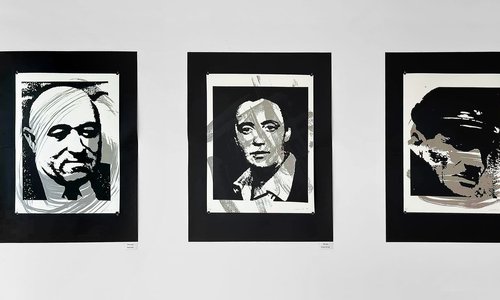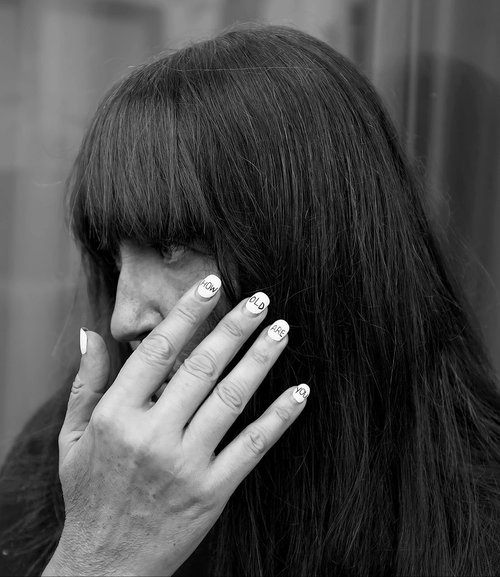The timely dystopia of Russian artist Gosha Ostretsov
Gosha Ostretsov, known for exceptionally well crafted, long-term projects and detailed personal mythologies has opened a new exhibition in Moscow’s Cube art centre. Called ‘Precious Stones of Dissent’ and organized by Syntax gallery, it has a poignant message for today.
Gosha Ostretsov (b. 1967) is no newcomer in the shadowy realms of dystopia. He appeared on the Russian art scene in the mid 1980s, creating funky New Wave inspired costumes which mixed fashion and contemporary art. He was a member of the Kindergarten group together with artists Georgy Litichevsky (b. 1956), German Vinogradov (1957–2022) and Nikolay Filatov (b. 1951), and in 1988 he left Moscow for Paris where he spent a decade working in fashion and advertising. He is among the few artists in Russia who work with a comic book aesthetic; his dynamic paintings brim with raw and bold colours. Ostretsov returned to Russia during the final years of the Yeltsin era and witnessed Vladimir Putin’s quick rise to power. It was at that time in the early 2000s when his art newly acquired a socio-philosophical dimension.
His ‘New Government’ project was a dystopian vision of a technocratic state governed by anonymous mask-wearing bureaucrats whose real identities were never disclosed to the public. He developed this project across different media, such as painting, installation and performance, and it culminated in the artist wearing a New Government mask at his own wedding. Two installations from the series were bought by British art collector Charles Saatchi. For almost 15 years he had switched his attention to other projects when he decided to revisit the idea at the beginning of 2022, shortly before the outbreak of the Russian-Ukrainian conflict.
Over the years Ostretsov’s mythology has become exceptionally complex and for casual spectators it is even confusing to the eye. At Moscow’s Cube art centre you find yourself staring at what looks like a child’s scale model of a Nazi extermination camp or at paintings where Renaissance-styled figures are pierced with abstract geometric forms. These canvasses are applied with various reliefs and objects struck by bolts of bright colour. ‘These are the precious stones of dissent’, the artist explains somewhat obliquely. This sinister, dystopian world is based on the idea of a prison-state, he elaborates. According to the canon of its own fictional propaganda, there are three prisons from which a citizen can not escape during his or her lifetime: body, family and state; the latter looks after all citizens and provide social services. Once a citizen reaches retirement age, the government generously releases him or her from all three to be sent to state-run ‘Houses of Resurrection’ where they are relieved from the burden of their mortal bodies, so that their souls can start to enjoy eternal life. In this prison-state the artist develops a visual code of propagandist art based on classical images by Raphael and Botticelli. Yet, this upside-down world where death is seen as liberation and mask-wearing government officials usurp the place of Botticelli’s Madonna, is disrupted by mysterious ‘precious stones of dissent’, which, according to the artist, represent creative energy.
At the exhibition you can see miniature models of the Houses of Resurrection, powerful wooden reliefs that draw you into a bleak urban labyrinth evocative of German Expressionist film sets, and abstract and figurative paintings. There are abstract ‘energies’ in all the works and a dog fight between abstraction and figuration can be experienced on a subconscious level. ‘This energy cannot be controlled, nobody knows where it comes from and where it goes to, because it appears from inside the human mind’, the artist says. Indeed, what we see can be interpreted as a vision of a mind distorted by propaganda, yet troubled by occasional insights of reality. The outcome of this battle seems unclear even to the artist himself. ‘In the fight between spirit and body, the body will always prevail over death in the end’, he says rather enigmatically. Yet, the vibrant colours of his works seem to contradict the pessimism of his own prophecy.
Gosha Ostretsov. Precious Stones of Dissent
Moscow, Russia
November 17 – December 19, 2022






